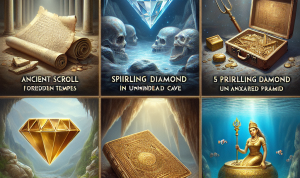Dive into the Enchanting World of Eight Treasures Chinese Cuisine
Greetings, my fellow culinary explorers, the "Rare Treasures Online," and welcome to an extraordinary journey into the captivating realm of "Eight Treasures Chinese Cooking." Join us as we unravel the secrets, explore the flavors, and discover the historical significance of this tantalizing culinary masterpiece.
The journey of "Eight Treasures Chinese Cooking" begins with the tantalizing aromas that evoke nostalgia and beckon taste buds from distant lands. This delectable dish, a testament to Chinese culinary ingenuity, reflects centuries-old culinary traditions and embodies the harmonious juxtaposition of textures and flavors.
Discovering the Components of Eight Treasures Chinese Delight
The Culinary Octet
At the heart of "Eight Treasures Chinese Cuisine" lies an alluring octet of ingredients, each possessing distinct characteristics that culminate in an unforgettable gustatory experience:
- Pork Belly: Luscious and succulent, the pork belly adds an irresistible richness and depth of flavor.
- Duck: Aromatic and tender, the duck contributes a delicate smokiness that enhances the dish’s complexity.
- Chicken: Lean and flavorful, the chicken lends a contrasting texture and a touch of umami.
- Mushroom: Earthy and savory, the multitude of mushroom varieties adds a hint of wildness and umami to the ensemble.
- Vegetable Medley: A vibrant array of vegetables, including bamboo shoots, snow peas, and carrots, offers a refreshing crunch and vibrant color to balance the richness of the meat.
- Sea Cucumber: A traditional delicacy renowned for its unique texture and briny flavor, sea cucumber adds a touch of marine essence.
- Abalone: Renowned for its luxurious texture and oceanic depth, abalone elevates the dish to gastronomic heights.
- Dried Bean Curd: The dried bean curd imparts a subtle sweetness and umami, creating a harmonious balance between savory and sweet.
The Art of Assembly
The preparation of "Eight Treasures Chinese" requires meticulous attention to detail and a delicate hand. The ingredients, meticulously diced, are first stir-fried and then braised in a savory sauce. This time-consuming process allows the flavors to meld and deepen, transforming the individual elements into a unified symphony of taste.
Symbolism and Cultural Significance
Beyond its culinary allure, "Eight Treasures Chinese Cooking" also holds cultural and symbolic significance. The number "eight" symbolizes prosperity, good fortune, and auspiciousness in Chinese culture. Thus, this dish often graces special occasions and festivals, such as weddings, birthdays, and the Chinese New Year.
A Culinary Exploration: The Eight Treasures Table
| Ingredient | Description |
|---|---|
| Pork Belly | Succulent, fatty meat with a rich flavor |
| Duck | Aromatic and tender, with a delicate smokiness |
| Chicken | Lean and flavorful, offering a contrasting texture |
| Mushroom | Earthy and savory, adding umami and a hint of wildness |
| Vegetable Medley | Vibrant array of vegetables, providing crunch and color |
| Sea Cucumber | Traditional delicacy with a unique texture and briny flavor |
| Abalone | Luxurious texture and oceanic depth, elevating the dish |
| Dried Bean Curd | Imparts subtle sweetness and umami, balancing savory and sweet |
Frequently Asked Questions about Eight Treasures Chinese Cuisine
1. What is the origin of Eight Treasures Chinese Cuisine?
The origins of this dish can be traced back to the Ming Dynasty (1368-1644).
2. What are some popular variations of Eight Treasures Chinese Cooking?
Variations exist, including regional and chef-specific interpretations that introduce different ingredients or preparation methods.
3. Is Eight Treasures Chinese Cooking suitable for vegetarians?
No, as it traditionally incorporates meat ingredients. However, some vegetarian versions may substitute plant-based alternatives.
4. Can Eight Treasures Chinese Cuisine be prepared at home?
Yes, with patience and access to quality ingredients, this dish can be replicated in home kitchens. However, the preparation process is time-consuming.
5. What are the health benefits of Eight Treasures Chinese Cooking?
This dish is rich in protein, vitamins, and minerals, making it a nutritious choice.
6. Can Eight Treasures Chinese Cooking be served as an appetizer or a main course?
Traditionally served as a main course, it can also be enjoyed as an appetizer in smaller portions.
7. What is the significance of Eight Treasures Chinese Cuisine during special occasions?
It symbolizes prosperity, good fortune, and auspiciousness, making it a popular choice for celebrations and festivals.
8. How long does Eight Treasures Chinese Cooking typically take to prepare?
The preparation process, including dicing, stir-frying, and braising, can take several hours.
9. What are some recommended side dishes to accompany Eight Treasures Chinese Cooking?
Steamed rice, fried noodles, or a crisp green salad can complement the richness of this dish.
10. Where can I find authentic Eight Treasures Chinese Cuisine?
Look for reputable Chinese restaurants specializing in traditional cuisine or try cooking it yourself with readily available ingredients.
Conclusion
My dear "Rare Treasures Online," our exploration into the enchanting world of "Eight Treasures Chinese Cooking" has been a delectable adventure. From its tantalizing flavors to its cultural significance, this culinary masterpiece continues to captivate taste buds and embody the rich tapestry of Chinese cuisine.
As you embark on your culinary journeys, do not hesitate to delve deeper into the treasures of Chinese gastronomy. Discover the mysteries of Ma Po Tofu, the umami-rich Szechuan Beef, and the delicate artistry of dim sum. The world of Chinese cooking awaits your adventurous palate, offering a boundless realm of culinary wonders just waiting to be explored.
FAQ About Chinese "Eight Treasures"
1. What are the "Eight Treasures of China"?
The eight treasures are eight rare and valuable materials or objects in Chinese history: gold, silver, pearls, jade, coral, amber, agate, and lapis lazuli.
2. What is the origin of the "Eight Treasures"?
The concept of the "Eight Treasures" emerged during the Western Han dynasty (206 BCE – 24 CE) and has been associated with auspiciousness and good fortune.
3. What is the significance of gold and silver?
Gold and silver represent wealth, prosperity, and prestige.
4. Why are pearls included?
Pearls symbolize purity, beauty, and longevity.
5. What is the meaning behind jade?
Jade represents nobility, virtue, and good luck.
6. How is coral significant?
Coral signifies prosperity, good fortune, and protection against evil.
7. What is the role of amber?
Amber is believed to have healing properties and is often used as a talisman for health and protection.
8. Why is agate included?
Agate represents strength, resilience, and balance.
9. What is the significance of lapis lazuli?
Lapis lazuli symbolizes wisdom, enlightenment, and communication.
10. What is the purpose of the "Eight Treasures"?
The "Eight Treasures" are often used in Chinese art, architecture, and jewelry as symbols of good luck, wealth, and abundance.



